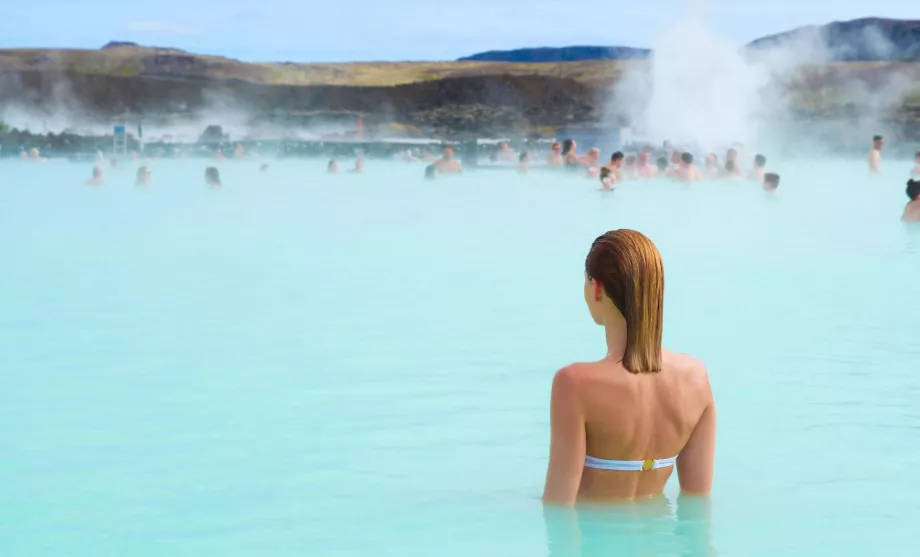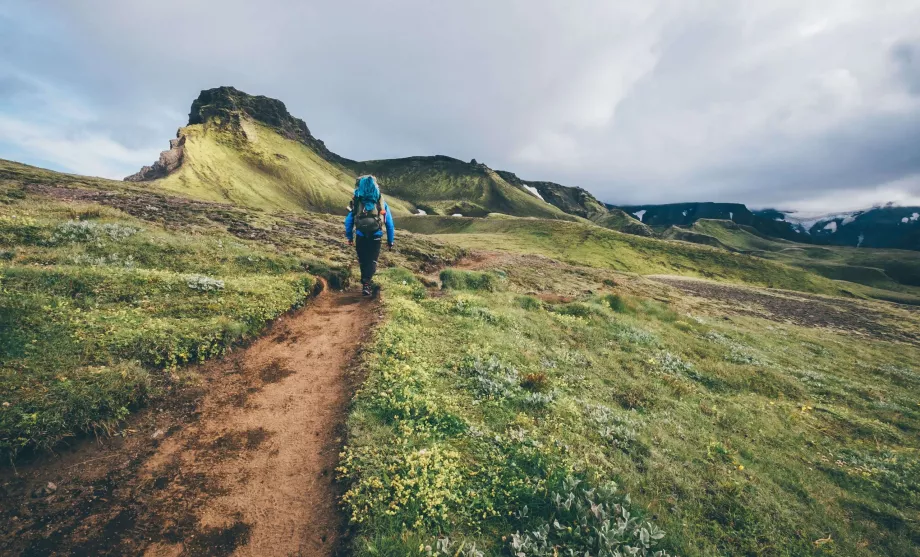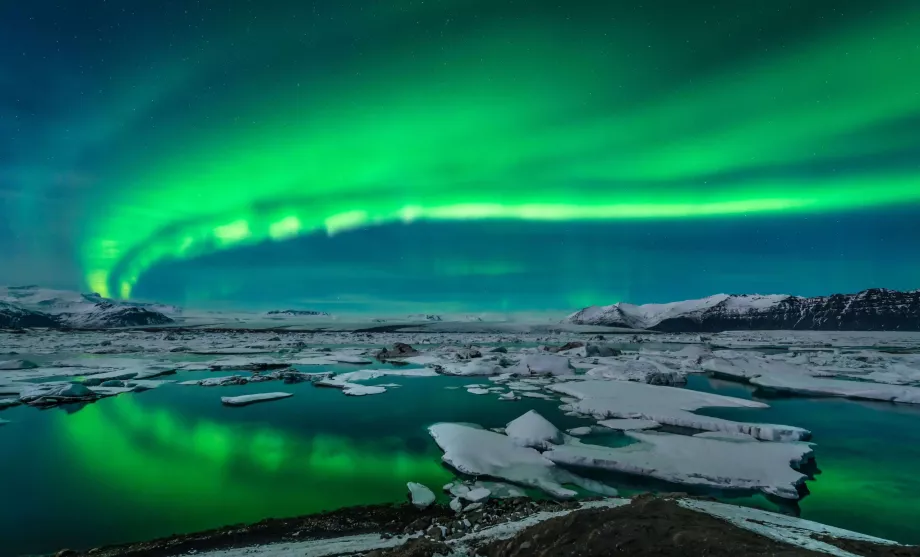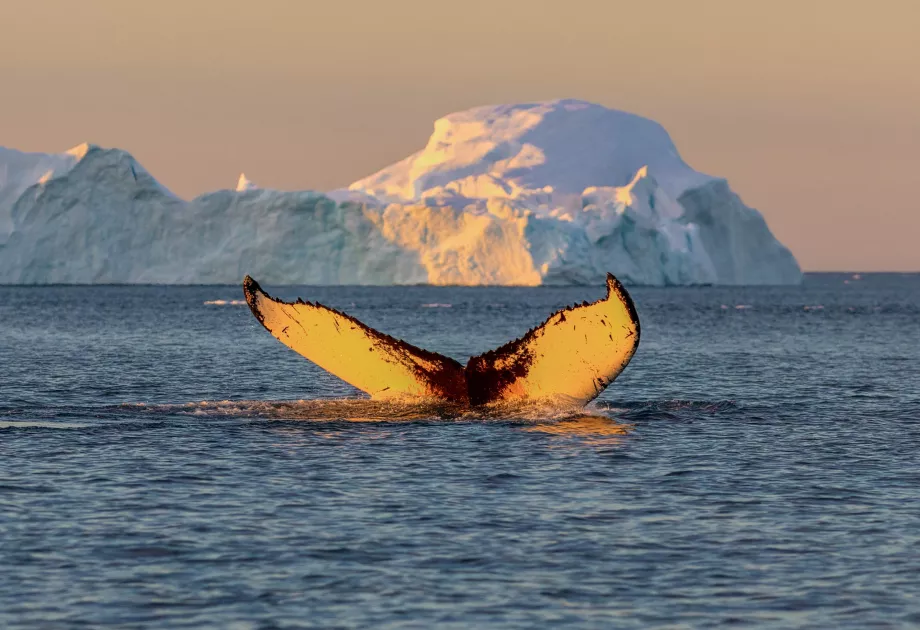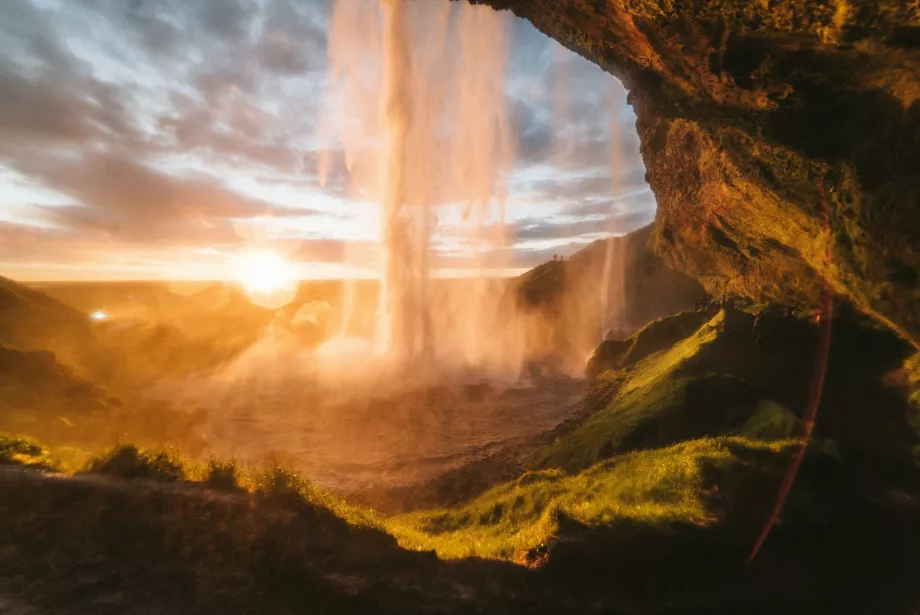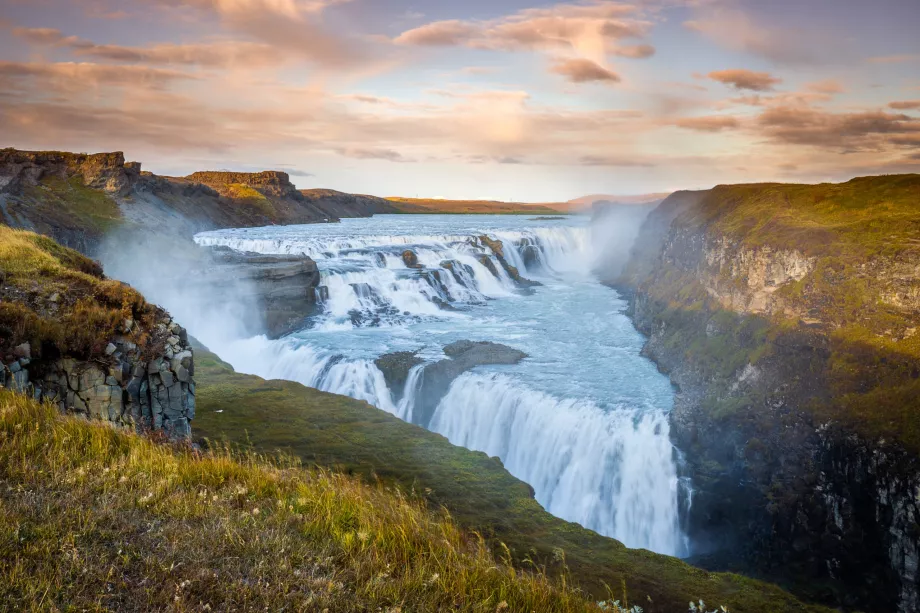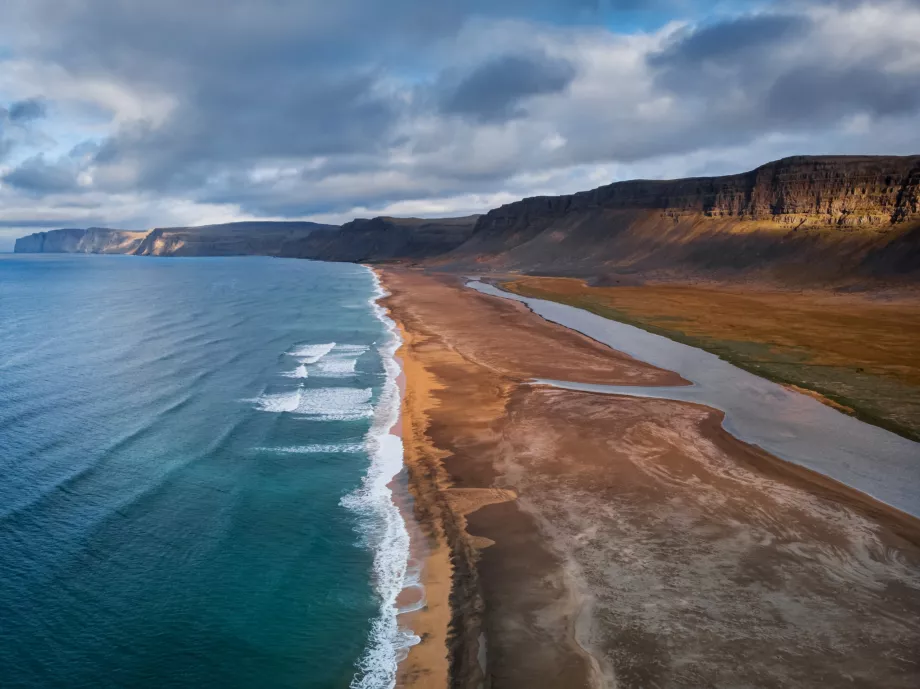Ісландія - що робити
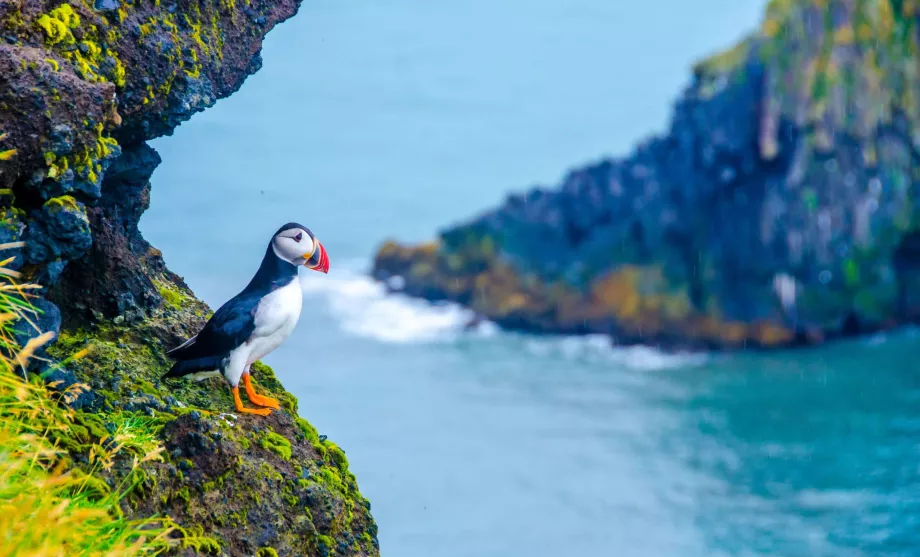
Whether you spend a week or a month in Iceland, you'll always feel like it's not enough. Iceland is a traveller's paradise for those who want to have an adventure or take in the beautiful scenery. Whatever the reason for your visit, the following tours or activities are definitely worth taking.
Search for accommodation in Iceland
Ice climbing
Iceland is known as the "land of fire and ice" and it is the ice that is represented by 13 glaciers, with Vatnajökull being the largest in Europe at 8,300 square kilometres. The many glacial run-offs that flow into easily accessible valleys offer one of Iceland's most popular activities: glacier hiking.
You are not allowed to enter the glacier directly without a guide, which is actually an advantage. You don't have to have any previous experience with glacier climbing. Walking on a glacier is not that physically demanding, you don't need any mountaineering skills.
The most popular glacier is the much-visited Skaftafell or Sólheimajökull, the closest glacier to Reykjavík.
Prices and excursions
Prices for organised trips range between 14 000 isk and 20 000 isk, and you can usually expect a 3-4 hour walk on the glacier, sometimes enhanced by a visit to a glacier cave. The cheaper trips start directly below the glacier and involve driving to the site, while the more expensive ones include a bus ride to/from Reykjavik.
Examples of agencies:
Hot springs, geothermal lagoons and swimming pools
In Iceland, you'll encounter geothermal activity at every turn, whether you're taking a shower or want to take a dip in a natural hot spring. After a hard trek, there's nothing better than staying out in the fresh air, soaking in the warm water and just relaxing.
The Icelanders know this very well, so they make many geothermal springs available to tourists, which can be found in big cities as well as in the most remote villages. If you want to have a chat with the locals, make sure you go to one of the pools. Plus, you'll be surprised how little you'll pay to enter a pool.
The most famous thermal baths:
The last and the cheapest option is to find a natural geothermal lake, which is located in Landmannalaugar, for example, and you'll definitely have a great experience, and it's absolutely free.
Many small spas can be found, for example, on the Reykjanes peninsula between Reykjavík and Keflavík Airport.
Treks
For many travellers, the countless short and multi-day treks are the main attraction of Iceland. If you go on a trek, expect the landscape to change before your eyes within a few hours.
One of the best and most famous treks is the 55km Laugavegur trek, which takes you through the Rainbow Mountains until you reach Thor's Valley, or Þórsmörk. You can extend this trek by a few days, starting from Skógar and walking 23 km between glaciers. You will also find plenty of treks in the Westfjords that are not as well known, so you will encounter far fewer travellers here.
Hiking trails, long and short, challenging and easy, but you can do them literally in every place in Iceland. Most routes are at least basically marked, but you should always take into account that you are in a harsh Arctic environment, where even in the middle of summer temperatures can drop below 5°C.
One of the most popular hiking locations is definitely the Rainbow Mountains of Landmannalaugar.
Aurora viewing
Aurora borealis can be commonly seen in Iceland from September to April, the months when it is darkest. If the weather is just right and the skies are clear, there's a good chance you'll see the Aurora Borealis. It is also possible to see the Northern Lights in Reykjavik, but the brightness will be very limited due to the many lights, so it's worth venturing outside of Reykjavik and you don't have to travel too far.
For detailed information, tips on aurora forecast websites and more, see the more detailed article Aurora Borealis in Iceland.
Whale watching
You don't have to be a "whale enthusiast" to appreciate a boat trip to see these remarkable mammals. You might spot a killer whale, fin whales or humpback whales, as well as countless smaller cetacean species such as porpoises, bowheads or sperm whales.
Iceland is one of the destinations in the world where you are most likely to see whales. Boat crews are experienced, they know the right places to go and how to behave if a whale does appear. Plus, the trips last long enough (usually 2-4 hours) that the chances are really high. You have to take into account possible bad weather and possible cancellation of already purchased trips.
When is the best time for whale watching?
When it comes to the frequency of whale sightings, summer and winter do not differ much. However, conditions are clearly better in summer, when there are longer days, calmer weather and less rough seas, which contribute to much greater visibility and significantly add to the percentage chance of seeing a whale.
Where are the best conditions?
There are 4 main places to go on whale watching trips in Iceland. All have a high probability of seeing a whale, all have their pros and cons.
- Húsavík - northern Iceland, the largest number of cetacean species from small to the largest humpback whales, occasionally a killer whale is seen. Húsavík boasts the highest percentage chance of spotting a large whale - up to 97%.
- Reykjavík - the most accessible spot right in the capital, you'll almost certainly see dolphins here, and fin whales are also abundant. The chances of seeing a whale are slightly lower due to the relatively heavy boat traffic, but still over 85%.
- Grundafjörður - the beautiful setting of the Snaefellsnes peninsula, here is the best chance of spotting killer whales, sperm whales and bowheads.
- Akureyri - there is a similarly high species diversity as in Húsavík, but it is likely that while in Akureyri you will see 1-2 times as many large whales during the cruise, in Húsavík it can be twice as many.
How much do the trips cost and who organises them?
There are many companies that offer day trips to see whales. Prices vary depending on the length of the trip, the program and the location, but generally range from 11 000 isk to 18 000 isk for 3-4 hours. See examples of agencies in each city:
- Húsavík: Gentle Giants, Húsavík Adventures, North Sailing
- Reykjavík: Elding, Grayline, Whale Safari, Ambassador, Arctic Adventures
- Grundafjörður + Ólafsvík: Arctic Adventures, Láki Tours
- Akureyri: Arctic Sea Tours (Dalvík), Elding, Ambassador
The Kingdom of Waterfalls
You would find few countries in the world with such a dense concentration of waterfalls. Iceland is literally a kingdom of waterfalls, you can count thousands and tens of thousands of waterfalls and you will find them literally on every corner, in every corner of Iceland.
TOP 7 most beautiful waterfalls in Iceland
- Dynjandi - a somewhat forgotten waterfall consisting of 7 cascades and falling from a height of 150 metres, located in a remote area of the Westfjords
- Seljalandsfoss - one of the most famous waterfalls in the world, which can be seen from behind thanks to the overhang, especially popular at sunset
- Skógafoss - an easily accessible monumental, beautifully straight and wide waterfall on the Ring Road
- Gullfoss - the most visited "double cascade" waterfall and a fixture of the Golden Circle
- Glymur - at 198 metres, Iceland's second highest waterfall, falling into a photogenic narrow gorge
- Dettifoss - the second most massive waterfall in terms of water flow in the whole of Europe
- Hraunfossar - lava waterfalls permeating porous soil and several hundred metres wide
Icelandic beaches
With an average temperature of around 4°C to 11°C, the sea in Iceland is not really conducive to swimming, but the beaches are one of the most popular tourist attractions. They create some of the most beautiful and exotic scenery. Here you will find wild black volcanic beaches with basalt cliffs, among the most beautiful is Reynisfjara, which is often included in the lists of the most beautiful beaches in the world.
Not to be missed is Diamond Beach at the Jökulsárlón glacial lagoon, dotted with ice floes that give the impression of hundreds of diamonds.
In addition to the black beaches, however, you'll also find the golden, wide beach of Breiðavík in the western fjords and, just a few kilometres away, the golden and sometimes reddish sand of Rauðisandur.
Wandering the fjords
Norway in particular is famous for its fjords, but in Iceland you can also enjoy spurs of sea extending deep into the land, flanked by majestic and silent bare mountains with beautiful views. There are two main fjord areas in Iceland, each at the other end of the island.
While the Westfjords are a remote rugged landscape with absolutely immaculate landscapes, numerous bird colonies and often only gravel roads accessible only in summer, the Eastfjords around the town of Seyðisfjörður are perfectly accessible via the main road number 1 "Ring Road" which is passable all year round.
Road trip around
With only one road running around Iceland, the centre of Iceland being hard to reach and public transport not very widespread, a round trip around Iceland is almost a necessity. You'll have 8 days to get there, but you can spread it out over three weeks. There's plenty to admire along the way.
For more information on the various car tours in Iceland, see the more comprehensive chapter Itineraries or Tips for Trips.
Залишилися питання?
Якщо у вас є запитання або коментарі щодо статті...

